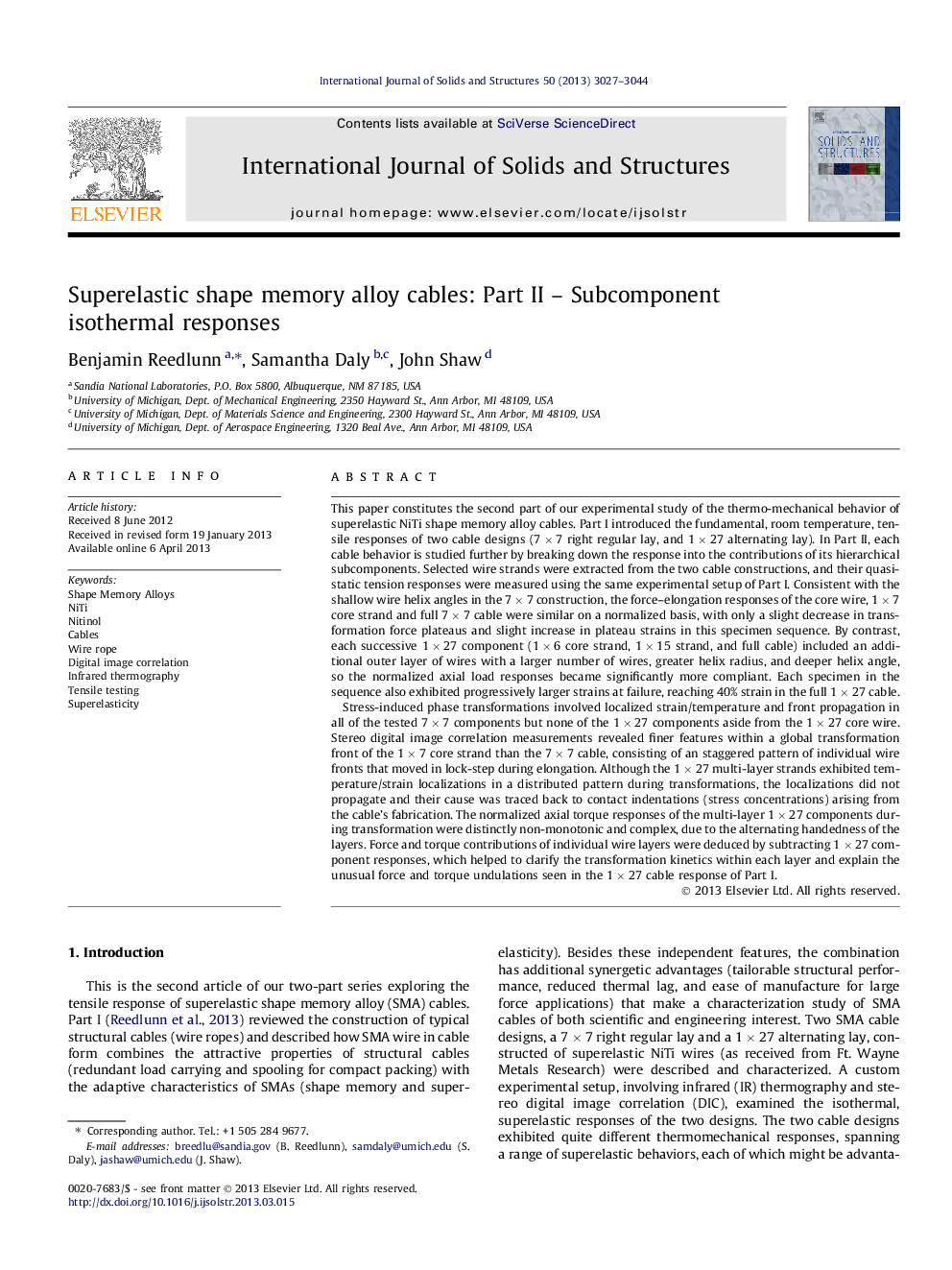| کد مقاله | کد نشریه | سال انتشار | مقاله انگلیسی | نسخه تمام متن |
|---|---|---|---|---|
| 277916 | 1430252 | 2013 | 18 صفحه PDF | دانلود رایگان |

• Simultaneous digital image correlation and infrared thermography performed.
• Subcomponents of the 7 × 7 and 1 × 27 cable designs characterized.
• Propagating transformation fronts in 7 × 7 components, none in 1 × 27 components.
• 1 × 27 components exhibited complex axial load and torque responses.
• Contributions of individual layers deduced by subtracting 1 × 27 component responses.
This paper constitutes the second part of our experimental study of the thermo-mechanical behavior of superelastic NiTi shape memory alloy cables. Part I introduced the fundamental, room temperature, tensile responses of two cable designs (7 × 7 right regular lay, and 1 × 27 alternating lay). In Part II, each cable behavior is studied further by breaking down the response into the contributions of its hierarchical subcomponents. Selected wire strands were extracted from the two cable constructions, and their quasi-static tension responses were measured using the same experimental setup of Part I. Consistent with the shallow wire helix angles in the 7 × 7 construction, the force–elongation responses of the core wire, 1 × 7 core strand and full 7 × 7 cable were similar on a normalized basis, with only a slight decrease in transformation force plateaus and slight increase in plateau strains in this specimen sequence. By contrast, each successive 1 × 27 component (1 × 6 core strand, 1 × 15 strand, and full cable) included an additional outer layer of wires with a larger number of wires, greater helix radius, and deeper helix angle, so the normalized axial load responses became significantly more compliant. Each specimen in the sequence also exhibited progressively larger strains at failure, reaching 40% strain in the full 1 × 27 cable.Stress-induced phase transformations involved localized strain/temperature and front propagation in all of the tested 7 × 7 components but none of the 1 × 27 components aside from the 1 × 27 core wire. Stereo digital image correlation measurements revealed finer features within a global transformation front of the 1 × 7 core strand than the 7 × 7 cable, consisting of an staggered pattern of individual wire fronts that moved in lock-step during elongation. Although the 1 × 27 multi-layer strands exhibited temperature/strain localizations in a distributed pattern during transformations, the localizations did not propagate and their cause was traced back to contact indentations (stress concentrations) arising from the cable’s fabrication. The normalized axial torque responses of the multi-layer 1 × 27 components during transformation were distinctly non-monotonic and complex, due to the alternating handedness of the layers. Force and torque contributions of individual wire layers were deduced by subtracting 1 × 27 component responses, which helped to clarify the transformation kinetics within each layer and explain the unusual force and torque undulations seen in the 1 × 27 cable response of Part I.
Journal: International Journal of Solids and Structures - Volume 50, Issues 20–21, 1 October 2013, Pages 3027–3044